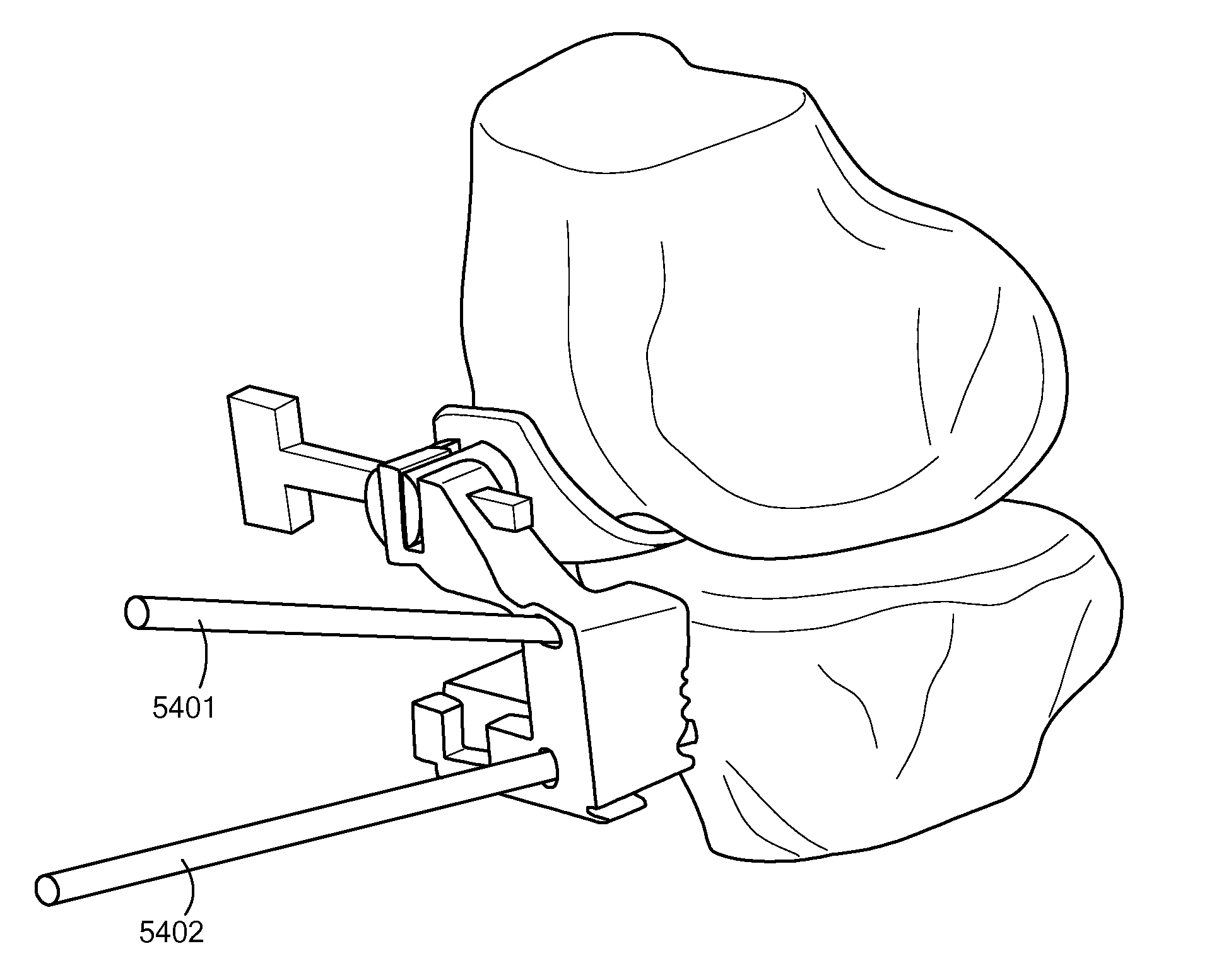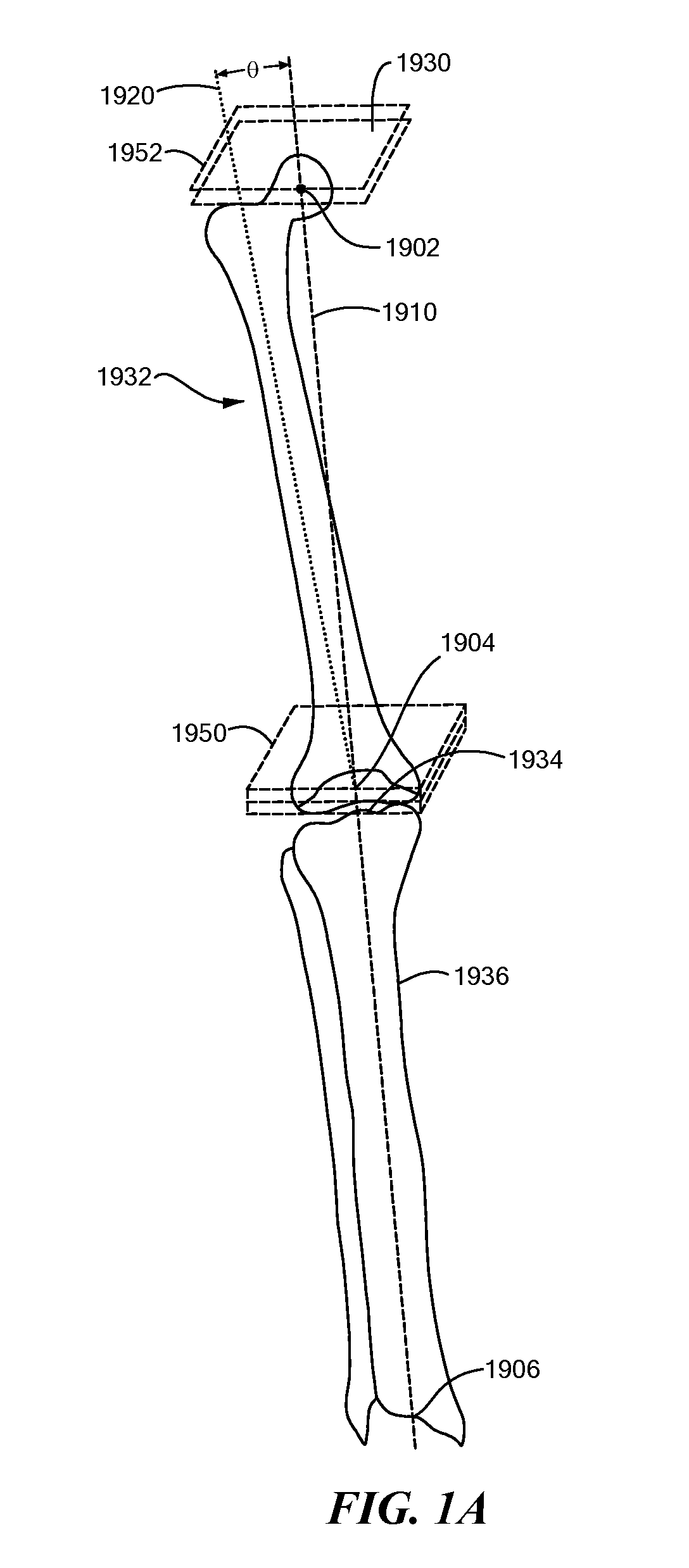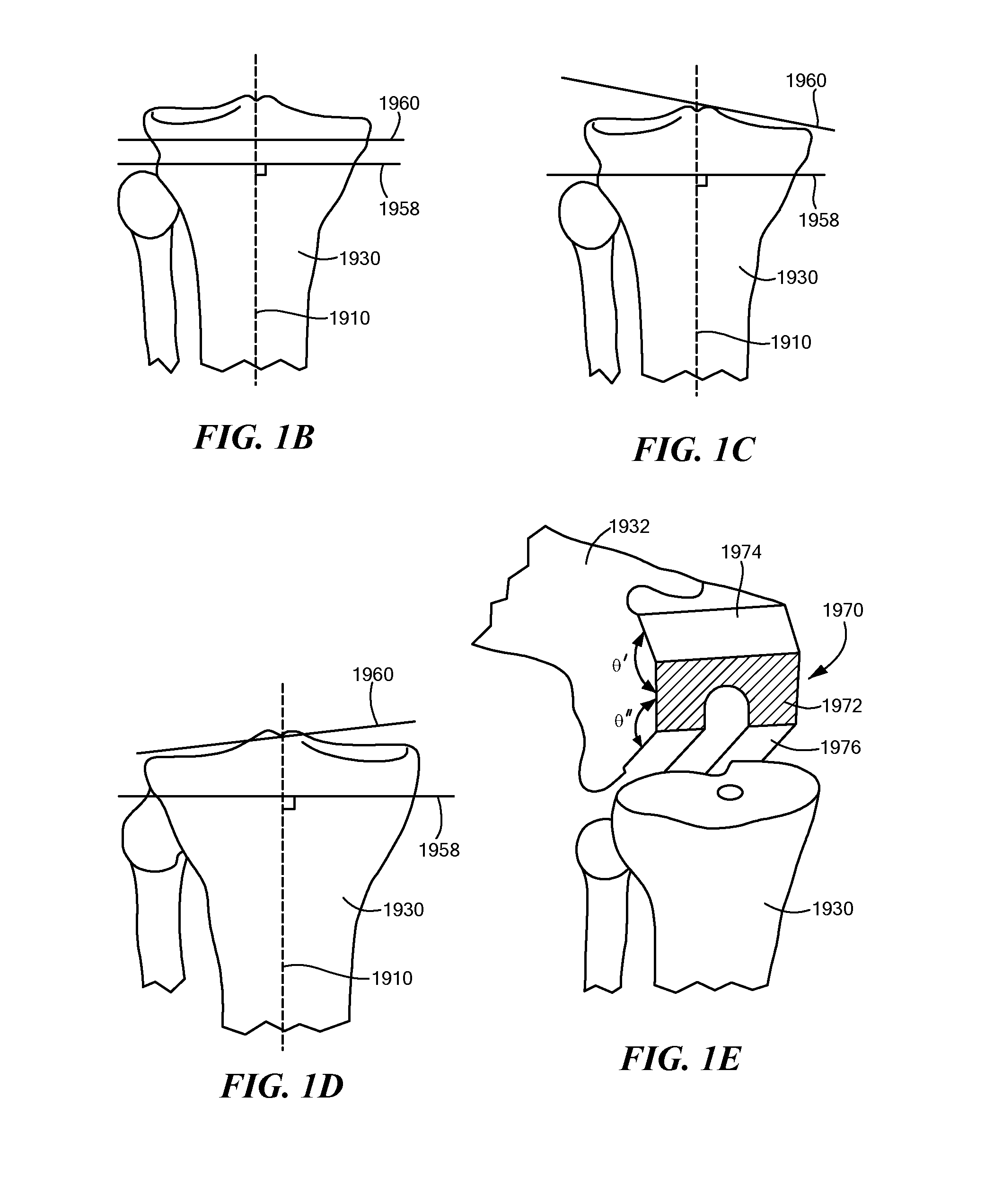Patient Selectable Joint Arthroplasty Devices and Surgical Tools
a patient-selected, joint technology, applied in the field of surgical templates, can solve the problems of serious physical deformity, debilitating, limited repair ability of cartilage, etc., and achieve the effect of improving or optimizing the position of the bone cu
- Summary
- Abstract
- Description
- Claims
- Application Information
AI Technical Summary
Benefits of technology
Problems solved by technology
Method used
Image
Examples
example 1
Unicompartmental Knee Resurfacing Using Patient-Specific Implants and Instrumentation
[0203]An exemplary surgical technique for use in implanting a novel partial knee resurfacing UKA using customized, single-use instrumentation is described below, in accordance with one embodiment of the invention.
[0204]CT scans of a patient's knee and partial scans of the hip and ankle are utilized to create patient-specific implants and instrumentation. Based on the CT images, the knee anatomy is digitally recreated, the surface topography of the femur and tibia are mapped, and axis deformity is corrected. The same data is used to create cutting and placement guides that are pre-sized and pre-navigated to work with the patient's anatomy and custom implants.
[0205]A kit may be provided with the resurfacing implants and disposable instrumentation in a single sterile tray, as shown in FIG. 31, in accordance with one embodiment of the invention. The various instruments in the kit may be patient-specific...
PUM
 Login to View More
Login to View More Abstract
Description
Claims
Application Information
 Login to View More
Login to View More - R&D
- Intellectual Property
- Life Sciences
- Materials
- Tech Scout
- Unparalleled Data Quality
- Higher Quality Content
- 60% Fewer Hallucinations
Browse by: Latest US Patents, China's latest patents, Technical Efficacy Thesaurus, Application Domain, Technology Topic, Popular Technical Reports.
© 2025 PatSnap. All rights reserved.Legal|Privacy policy|Modern Slavery Act Transparency Statement|Sitemap|About US| Contact US: help@patsnap.com



